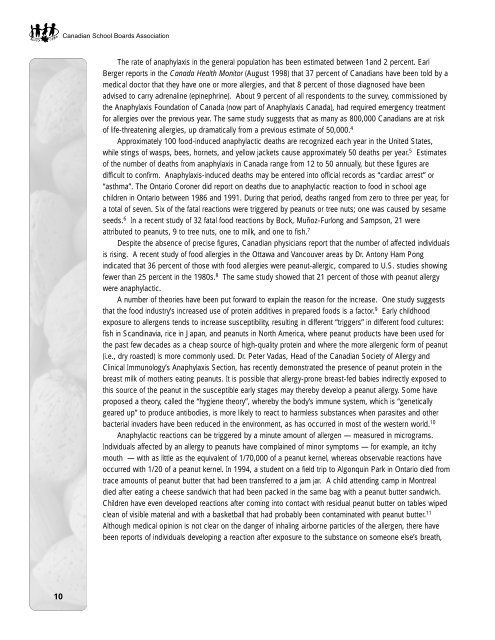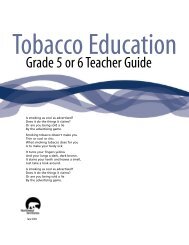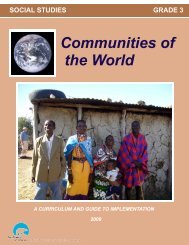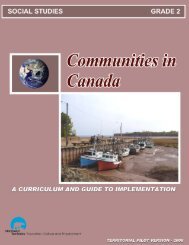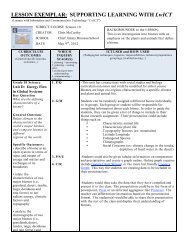Anaphylaxis: A Handbook for School Boards - Education, Culture ...
Anaphylaxis: A Handbook for School Boards - Education, Culture ...
Anaphylaxis: A Handbook for School Boards - Education, Culture ...
You also want an ePaper? Increase the reach of your titles
YUMPU automatically turns print PDFs into web optimized ePapers that Google loves.
Canadian <strong>School</strong> <strong>Boards</strong> AssociationThe rate of anaphylaxis in the general population has been estimated between 1and 2 percent. EarlBerger reports in the Canada Health Monitor (August 1998) that 37 percent of Canadians have been told by amedical doctor that they have one or more allergies, and that 8 percent of those diagnosed have beenadvised to carry adrenaline (epinephrine). About 9 percent of all respondents to the survey, commissioned bythe <strong>Anaphylaxis</strong> Foundation of Canada (now part of <strong>Anaphylaxis</strong> Canada), had required emergency treatment<strong>for</strong> allergies over the previous year. The same study suggests that as many as 800,000 Canadians are at riskof life-threatening allergies, up dramatically from a previous estimate of 50,000. 4Approximately 100 food-induced anaphylactic deaths are recognized each year in the United States,while stings of wasps, bees, hornets, and yellow jackets cause approximately 50 deaths per year. 5 Estimatesof the number of deaths from anaphylaxis in Canada range from 12 to 50 annually, but these figures aredifficult to confirm. <strong>Anaphylaxis</strong>-induced deaths may be entered into official records as “cardiac arrest” or“asthma”. The Ontario Coroner did report on deaths due to anaphylactic reaction to food in school agechildren in Ontario between 1986 and 1991. During that period, deaths ranged from zero to three per year, <strong>for</strong>a total of seven. Six of the fatal reactions were triggered by peanuts or tree nuts; one was caused by sesameseeds. 6 In a recent study of 32 fatal food reactions by Bock, Muñoz-Furlong and Sampson, 21 wereattributed to peanuts, 9 to tree nuts, one to milk, and one to fish. 7Despite the absence of precise figures, Canadian physicians report that the number of affected individualsis rising. A recent study of food allergies in the Ottawa and Vancouver areas by Dr. Antony Ham Pongindicated that 36 percent of those with food allergies were peanut-allergic, compared to U.S. studies showingfewer than 25 percent in the 1980s. 8 The same study showed that 21 percent of those with peanut allergywere anaphylactic.A number of theories have been put <strong>for</strong>ward to explain the reason <strong>for</strong> the increase. One study suggeststhat the food industry’s increased use of protein additives in prepared foods is a factor. 9 Early childhoodexposure to allergens tends to increase susceptibility, resulting in different “triggers” in different food cultures:fish in Scandinavia, rice in Japan, and peanuts in North America, where peanut products have been used <strong>for</strong>the past few decades as a cheap source of high-quality protein and where the more allergenic <strong>for</strong>m of peanut(i.e., dry roasted) is more commonly used. Dr. Peter Vadas, Head of the Canadian Society of Allergy andClinical Immunology’s <strong>Anaphylaxis</strong> Section, has recently demonstrated the presence of peanut protein in thebreast milk of mothers eating peanuts. It is possible that allergy-prone breast-fed babies indirectly exposed tothis source of the peanut in the susceptible early stages may thereby develop a peanut allergy. Some haveproposed a theory, called the “hygiene theory”, whereby the body’s immune system, which is “geneticallygeared up” to produce antibodies, is more likely to react to harmless substances when parasites and otherbacterial invaders have been reduced in the environment, as has occurred in most of the western world. 10Anaphylactic reactions can be triggered by a minute amount of allergen — measured in micrograms.Individuals affected by an allergy to peanuts have complained of minor symptoms — <strong>for</strong> example, an itchymouth — with as little as the equivalent of 1/70,000 of a peanut kernel, whereas observable reactions haveoccurred with 1/20 of a peanut kernel. In 1994, a student on a field trip to Algonquin Park in Ontario died fromtrace amounts of peanut butter that had been transferred to a jam jar. A child attending camp in Montrealdied after eating a cheese sandwich that had been packed in the same bag with a peanut butter sandwich.Children have even developed reactions after coming into contact with residual peanut butter on tables wipedclean of visible material and with a basketball that had probably been contaminated with peanut butter. 11Although medical opinion is not clear on the danger of inhaling airborne particles of the allergen, there havebeen reports of individuals developing a reaction after exposure to the substance on someone else’s breath,10


